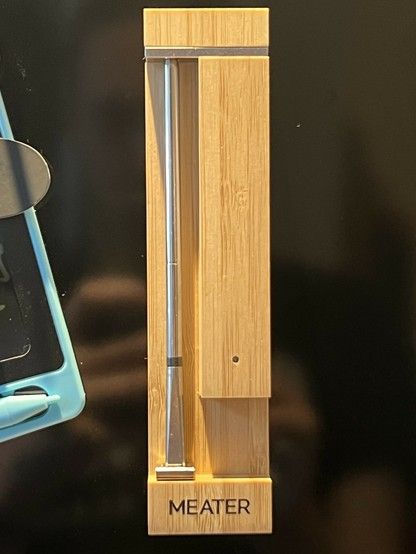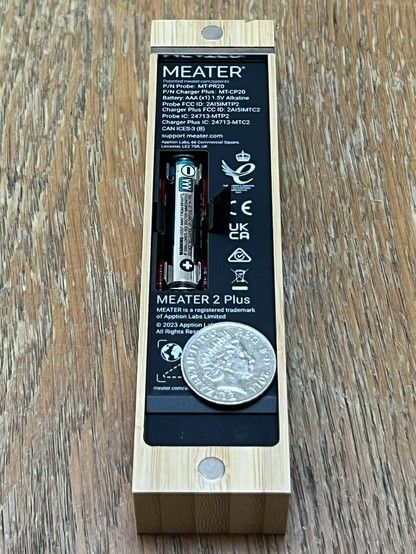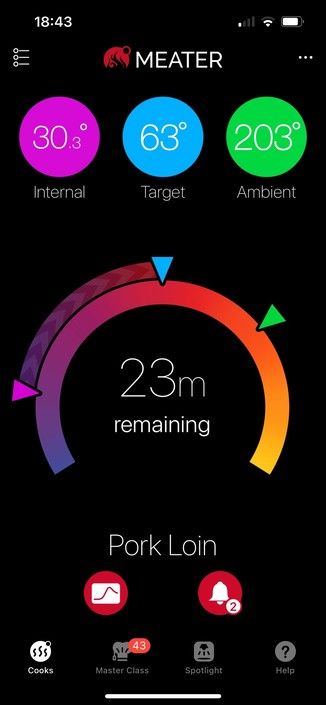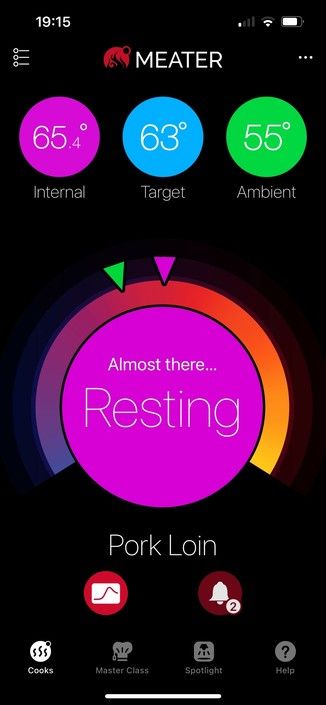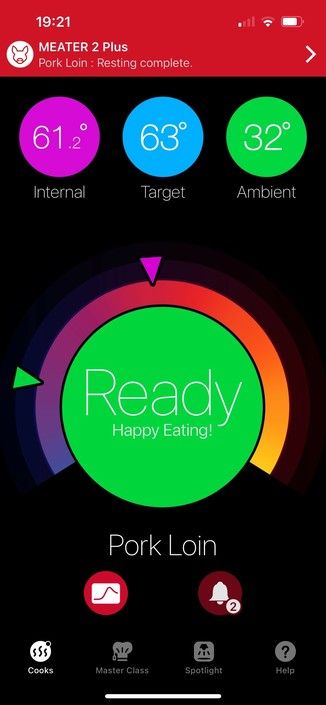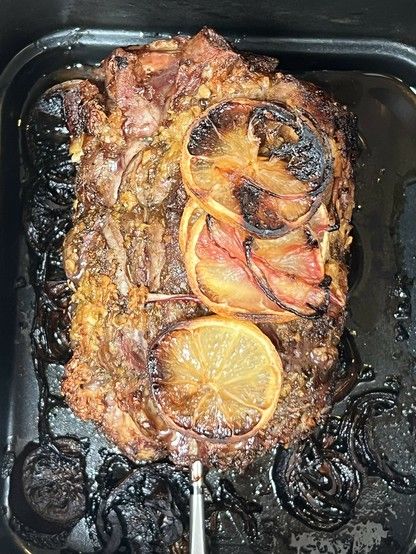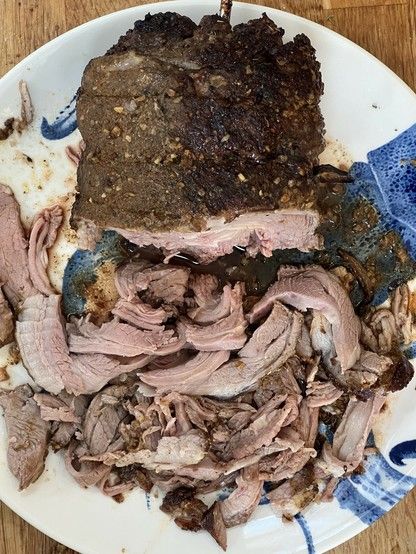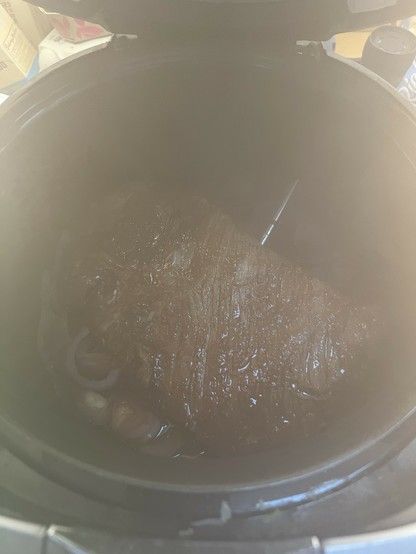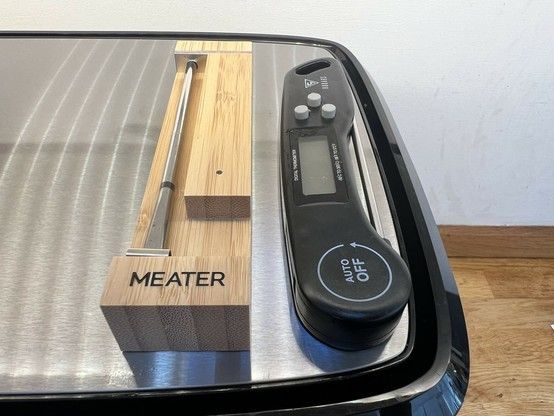MEATER 2 Plus Smart Meat Thermometer Reviewed
It seems in vogue to be the next champion of magical or life changing technology. To ship some AI-powered, over-hyped widget to finally replace your smartphone. To be the company that changes the world.
Meanwhile somewhere in the back there’s MEATER, creating little wireless thermometers that quietly, effectively and in the most nondescript fashion imaginable, just flippin’ work.
To facilitate this nonsense waffle of a review MEATER’s PRs chucked a MEATER 2 Plus my way. Admittedly it was after I dived in with the silly question- “Hey, does this work in an air fryer?”
The TLDR is yes, yes it does. It also works in a rice cooker. But does it work well?
Magnets, how do they work!?
Okay let’s set the scene. I picked up an Air Fryer not because I wanted to jump on some revolutionary cooking bandwagon. No. I just wanted to avoid spending five times as much fitting a new double oven to replace the tired, broken, smoking wreck we inherited from the previous owners of our home. I intended to switch most, if not all, of our cooking over to the Air Fryer. I didn’t expect quite how many duties it would take over. Chips are an obvious shoe in, and various frozen lumps of chicken or fish have been a mainstay for tasty lunchtime wraps. But why fry sausages or bacon in a pan when you can chuck them in too? Beef burgers? Yup. Roast… chicken? Pork? Beef? Lamb? At this point I’ve done them all. With mixed results.
And that’s the rub. Mixed results. It’s not so much that air frying is so revolutionary and different a means of cooking that I can’t adapt to and embrace its quirks. It’s more that I really, fundamentally, have no idea what I’m doing when it comes to anything but long, slow cooks of lamb shoulder or pulled pork.
Enter MEATER. The pitch is that you stick it into your meat, stick the whole shebang into the oven, and the thermometer magically survives heat which should break any tiny electronic device and wirelessly monitors the temperature both inside and outside of your meat.
It sounds ridiculous, but I’ve been using a conventional, cheap and cheerful fold-out meat thermometer as a safety check for all my air fryer cooks – big and small – so switching to something that would give me more information, more easily, made sense.
Surprised to find everything powered by a AAA battery. Claims up to 24h of cooking once the thermometer is charged. Lasts 2 years with… one steak a week. A steak takes ten minutes at most though, so I’d expect six months at my usage.
And that’s what MEATER does. By means of its fancy, magnetic wooden dock (powered by a AAA battery which also charges the thermometer itself) the nondescript, squat metal skewer maintains a constant wireless connection which is then bridged via Bluetooth to an app on your phone. Via this connection you get a constant stream of temperature data that’s presented in the app as current internal/external temperatures, in addition to a graph of your cook over time.
But before you can do this, you’ve got to set up a cook, navigate a miniature training ground of pop-over warning videos and absolutely pinky swear that you won’t melt the MEATER into a useless puddle…
Thermowaffle
The simple fact is that MEATER is just fantastic engineering that turns your normal thermometer arrangement on its head and exploits the natural insulating properties of a giant hunk of meat to avoid being simply destroyed by 200-300c cooking temperatures.
To understand why flipping the thermometer end over end has such a big impact on survivability and makes the MEATER feel magical you’ve got to first have a basic understanding of what a Thermocouple is. In very, very brief terms it’s a thermometer that can survive temperatures normally destructive to electronics by being a solid-state combination of two dissimilar metals. Metal, as you probably know by now, has a habit of not melting until you get it quite hot. Most metals anyway… well… some of them. I’m not a metallurgist, okay? The point is that the metals used here don’t melt, but rather a small voltage is induced across them when they are heated. Thermocouples just turn heat into electricity, and some sensor at the other end measures how much electricity, from which it can then infer temperature.
So the thermocouple sticks into the meat, right? Well, conventionally yes- you’d measure the inside of a hot oven, furnace, or maybe even an active cook by using such a solid-state sensor. In this case, though, the thermocouple is actually in the “handle”, the flat stubby end that sticks out of the meat, of the MEATER.
And this is the magic trick the MEATER pulls. It moves the sensitive electronics and low-temperature thermometers to its tip, and separates them from the outside with an insulating barrier. The inside of a meat being cooked- unless you like eating charcoal briquettes- will never exceed 100c or so. Thus it’s reasonable to expect that MEATER- stuck into that meat- will never see dangerously high or destructive temperatures.
Unless you use it wrong…
And that’s why MEATER’s app is fastidious about ensuring you understand how to use the MEATER. “Push it up to this line,” it’ll say. “Make sure the thermometer is inserted into the thickest part of the meat,” it’ll clarify. And you’d better! These real, physical limitations ground the magic of MEATER into something more of this earth, but they don’t stop its creators going absolutely ham (ha ha ha) on the software side of the equation.
Software
A thermometer you stick into a piece of meat to give you constant temperature monitoring both inside and outside sounds like a pretty good idea, right?
But we have fancy algorithms and smartphones have way too much computing power for something so humble… what could be done with this data?
The MEATER app gives you internal and external temperatures along with a cooking time estimate and notifications to remove from heat and rest.
MEATER’s answer to this question is high accuracy cook time estimates, including the ability to take into account residual heating during resting to reach a final target temperature.
Before you poke the thermometer into your meat, you’re asked to “Set up a cook” which gives you a choice of various joints or meat products. You pick one, and are then asked to pick your desired target temperature. MEATER will give you a USDA recommendation for safety, but you’re perfectly at your liberty to raise or lower this as you see fit, in many cases moving the temperature through a range of annotates cooking outcomes- y’know, like when you’re in a restaurant and someone’s always asking for “medium rare” and exclaiming meat is simply inedible witho… that’s me, sorry that someone is me.
Because the app can see the temperature over time both inside and outside the meat, it can usually – but not always – produce a pretty accurate estimate of cooking time and not just prevent disaster but gently guide you through the process for perfect results.
And does it work? Of course it does! Can you still muck it up? I sure can…
Let’s run through the things I tried- in order: Post-PiWars Pork Loin, Mediterranean Lamb Breast and Rice-cooker Beef Brisket.
Porco Roasto
Right after the first day of PiWars- a non-destructive, international robot-competition hosted in Cambridge- I sped home with Paul to peruse our local Tesco for some inoffensive food options. At my recommendation- and knowing I had a thermometer to test- we opted for pork loin. I’ve cooked various pork joints in the air fryer quite a few times before, and have the process – edible crackling notwithstanding – pretty much nailed down. But could it be easier? Lazier?
Roast pork sandwiches are a family fav, so we whipped them up for a guest - without the guesswork for a change!
It could.
Dialing in a cook with MEATER suggested a “Medium Well” target internal temperature of 63c- more or less what I’ve been using, except I’d have to periodically open the air fryer and stab the joint with my flip-out meat thermometer. After sitting through the labyrinthine, unskippable video instructions I promised I knew what I was doing and pushed the thick, squat, skewer-like thermometer into the thickest part of the pork. I then shielded it with some tinfoil because I didn’t know quite how the air fryer maintained 200c.
The cook took roughly 44 minutes including rest time. The cooking graph showed the air fryer taking around 4 minutes of that time to go from a cold start to 200c. At around 27min I pulled out the drawer and discarded the foil to let the fat crisp up. At 34 minutes it was done and resting. The internal temperature continued to rise- as predicted by the app – for another six minutes or so and peaked at around 65.6C. This overshoot was almost certainly caused by the rise in temperature when I removed the foil. The resulting pork loin was… delicious, I think? There certainly wasn’t any left! I served it in buns with sloppy stuffing, bacon flavoured gravy and far too much applesauce and this family favourite was thoroughly enjoyed by our guest.
So did MEATER actually help here? Absolutely. It took the guesswork and attentiveness out of timing and monitoring the cook and let me focus on prepping other things. The results were pretty similar to my hands-on cooking efforts, but with far, far less busywork.
Slicin’ of the lambs
Lamb breast is a miserable sonofagun to get right. It’s a fatty, cheap cut, but it feels just so absolutely perfect sliced thinly and served with a pomegranate and orange salad in Greek flatbreads.
Honestly I didn’t really know what I was getting myself into with this, but any other kind of lamb was a little spendy and I wanted to throw together a nice meal for D without having to admit I spent a small fortune on it.
My first attempt at cooking the potentially tricky rolled lamb breast was mostly a success. We served on Greek breads with a mixed leaf salad spruced up with pomegranate seeds and sliced oranges.
The MEATER app didn’t have lamb neck, so I just YOLO’d it and picked Generic Lamb. I set the cook temperature to the low end of Medium Well – a target of 57c – but actually chickened out and raised that to 62c for a final peak temperature of 66.2c.
Using a mixture of judgement and wild guessing I dialled the air fryer to 140c, wrapped the lamb – and thermometer – in foil and watched the ambient temperature rise to meet this over the course of half an hour.
Two hours later the lamb was done and it was a very, very mixed bag. We got most of the way through the cut slicing thinly and carefully picking out any too-chewy bits, and found that the fat was broadly edible. About half way through it ended up a little sinewy, and I had to separate the meat and peel back the fat like a protective film. If I try it again, I think I’ll aim for a slightly higher target and cooking temperature, aiming for a similar cook time but with more time in that crucial fall-apart-tender zone.
Did MEATER help? Well for a first try cooking this cut over a period of two hours, I think a significant portion of my life would have been spent obsessing over it with worse results. While MEATER didn’t list the cut, and thus couldn’t give me better cooking advice, it still gave me pretty good results for a pretty difficult meat.
Rice Cooker Beef Brisket
A long, long time ago, at least two house moves ago Yum Asia sent D (and by extension me) their mainstay rice cooker- the Saura. It’s flippin’ brilliant, I love it, and I’ve shared so many rice-cooker Tahdig efforts over the years without really giving it the shout-outs it deserves.
But a rice cooker is just a cooker, for the most part, and you can get creative with it- we successfully made a cake in there once. I decided I’d throw caution to the wind and give the MEATER a three hour steaming, slow cooking a barbecue beef brisket in the Sakura.
In hindsight it was a mistake opening the rice cooker to try and take a photo. Not only did the temperature plummet and never quite recover, but… steam is a thing…
I was a dumb dumb and opened the rice cooker lid early in the cook, which immediately released all the steam and plummeted the temperature from its then peak of 100c down to 80c. It didn’t recover until the meat itself started coming up to temperature, at which point the ambient temperature and meat temperature started to rise in tandem to that critical peak of 95c.
At this point MEATER rightfully told me to get the meat the heck out of there and let it rest. I didn’t. I was marvelling at how the 3.5 hours (.5 of which I used to preheat some onions and apply a light sear to the brisket in the air fryer) I’d dialled into the rice cooker coincided to the minute with when MEATER proclaimed the cook finished. I left the meat in the cooker on “Keep Warm”, which dried it out and all but ruined it. I managed to recover it by boiling up the result in a pan with the cooking juices, a result which was enjoyed by everyone (we had another guest this time, to help eat up the extra food from my mad experiment) who insisted that it was delicious. And it was delicious.
The MEATER sure as heck tried to help this time, but by attempting to keep the food warm until everyone was ready I ruined the result. Rice cooker beef brisket is by far the thing I want to try again the most, aiming for that perfect cooked-but-succulent window that’s all too easy to miss.
Summary
What’s that? I can’t evaluate a meat thermometer based on three cooks? Well… I’m sorry, but there’s only so much meat we can eat, and long, involved meals are only my forte when I’m well rested and feeling adventurous. But since you asked, here’s one more-
Tesco Tempura
I’ve been trying to eat simpler, less chaotic meals at lunch times in order to avoid stuff I believe I’m allergic to. This mostly involves avoiding large amounts of bread, and making myself rice-based poke bowls with plenty of Kimchi and maybe a sprinkle of salad if I can find the time.
Tesco have some chilled-but-not-frozen prepared chicken pieces, of which the Tempura style one is particularly amenable to my poke bowl exploits. I figured I had nothing to lose and poked one of them with the MEATER to see if it would help.
MEATER works pretty well for smaller things too, though it is simpler to just eyeball it and check with a conventional thermometer. Here are some chilled Tesco tempura style chicken pieces.
It did. One thing I have trouble with when air frying chicken pieces is hitting that sweet spot between unsafe and unpleasant. Sure I’ll still eat it if it’s dried out, but that delicious succulent sweet spot is rather difficult to hit without babysitting the air fryer. In this case the MEATER helped immensely, using the temperature of one piece as a proxy for the others. I could cook myself a hearty lunch and prep the rice (it’s a two minute microwave packet, sigh) and salad. I still checked the other pieces with a conventional thermometer, but I might actually use the MEATER more often for things like this. Frozen stuff notwithstanding- since it’s impossible to push into something frozen!
Really the summary this time, I promise
I’ve already buried the lede here, but I’m pretty sure I either have ADHD or some dysfunction that requires any task to either consume my attention wholly or get forgotten, half baked or completely ruined. MEATER is *almost* the meat cooking panacea for this problem, but it does have the tiny, tiny problem of kicking the attention can down the road. It’s a little persistent with notification sounds, and I am a jedi master at ignoring beeps and boops (assuming I even hear them at all) preferring instead to use my nose as a “have I fudged this up” barometer.
As such, instead of focussing my attention on opening the air fryer drawer and checking the meat, I focus my attention on constantly watching the cooking progress, and checking the cook time graph. As a saving grace, the MEATER app will happily stay open and keep my phone awake, so I can prop it up against the kitchen splashback and carry on meal prep while simultaneously obsessing over the cooking particulars.
If you’re not immediately repulsed by the “smart” nature of MEATER and the idea of welcoming yet more probably superfluous convenience technology into your life then you might baulk at the £119 price tag. When multi-thermocouple thermometers can be had for less than half this price it seems like a tall order. But I promise you that MEATER is absolutely worth it.
My trusty flip-out thermometer- used to check virtually everything I air fry- hasn’t been replaced by the MEATER, but gets used for smaller, quicker things like frozen samosas, fish and such. The MEATER is so much better for longer cooks I don’t want to be checking manually 🤣
Ignoring the lack of trailing thermocouple wires snaking their way into your oven and making removing or moving the meat a contrived logic puzzle, MEATER is just slicker. Between the impeccable presentation of the bamboo charging cradle/wireless forward-a-ma-bob and the absolute sorcery involved in the sleek, near seamless probe itself, it is not just a practical and useful object but a damned nice looking one too. Behind the app’s continued insistence that you understand its limitations is a solid UX with easy step by step setup and a clean overview of your in progress cook.
MEATER is the magical technology product that deserves everyone singing its praises and is the epitome of taking modern technological smarts and using them to do one thing both extremely well, and considerably more efficiently or tidily than the old methods.
So how does it far on my Main/Keep/Give Away/Bin scale? Well it’s a firm “main” (that’s “use consistently”, derived from the videogame idea of a “main” character, or a “main” social media account… sheesh maybe I need a better scale). I will continue to enjoy finding excuses to put MEATER 2 Plus through its paces. I will certainly continue to enjoy eating the results.
